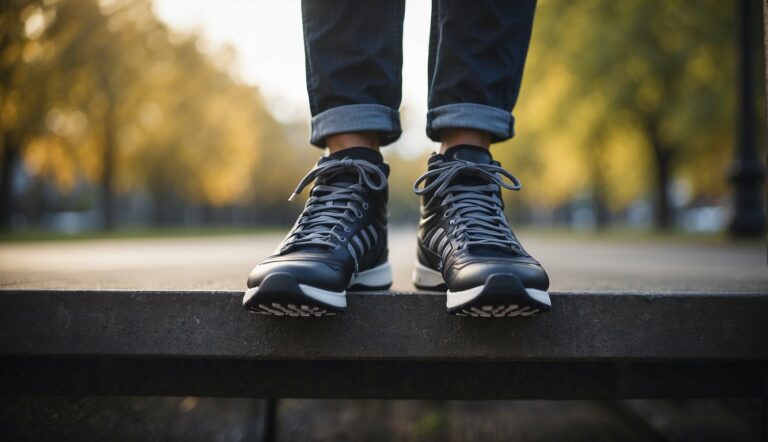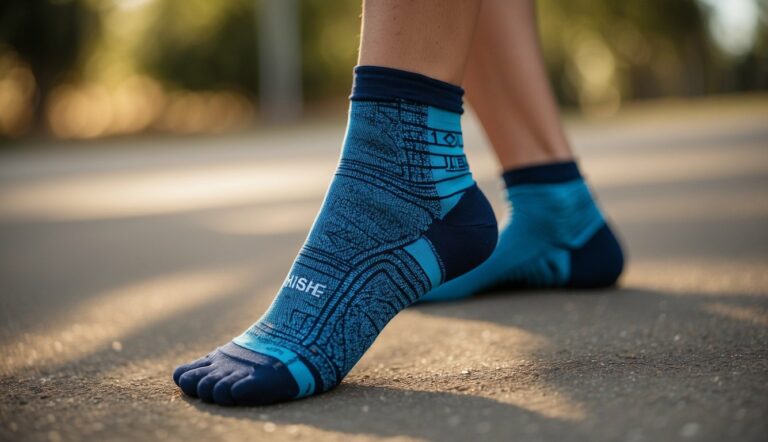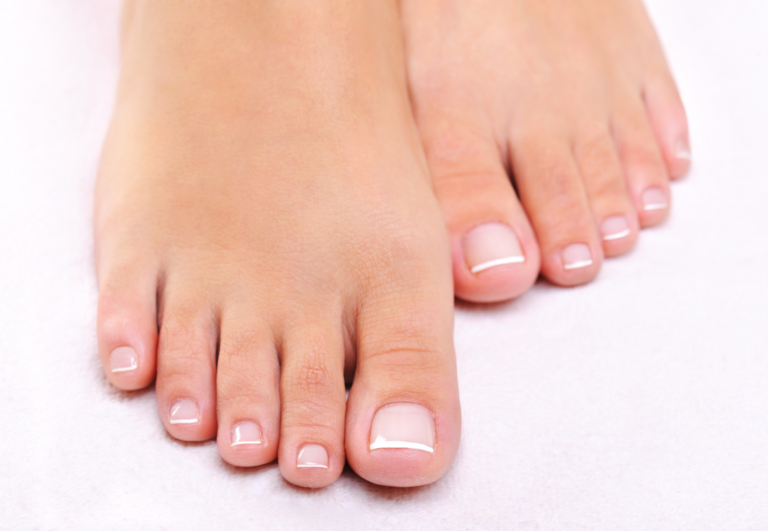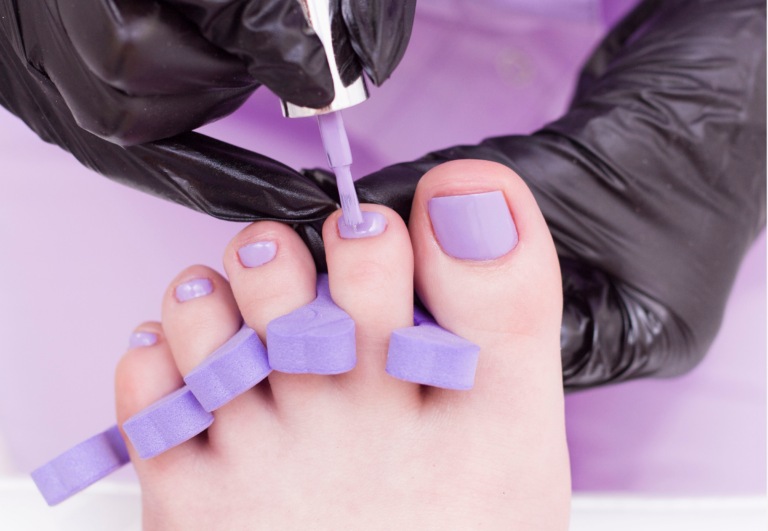How to Use Toe Spacers for Bunions: A Step-by-Step Guide
Bunions, those bony protrusions at the base of the big toe, are not just about aesthetics; they can lead to discomfort and pain. I’ve found that one nonsurgical remedy that often gets overlooked is the use of toe spacers. These simple devices can realign toes and provide relief from the pressure that bunions can cause. To maximize their benefits, it’s critical to use them properly.
Inserting toe spacers is a straightforward process. Begin by gently cleaning your feet to remove any debris that might affect the spacers’ position or cause irritation. Then, carefully place the spacer between the big toe and the second toe, making sure it sits comfortably against the skin. It’s essential to choose the right size and material for your toe spacers, as a poor fit can potentially worsen the discomfort.
To see effective nonsurgical treatments of bunions, consistent usage of toe spacers is key. Wearing them regularly can help guide the toes back to their natural position and relieve the discomfort associated with bunions. It’s also beneficial to pair this practice with proper footwear that offers adequate space for the toes to prevent further exacerbation of bunions.
How to Use Toe Spacers for Bunions
A bunion is a bony bump that forms on the joint at the base of your big toe. It happens when some of the bones in the front part of your foot move out of place. This causes the tip of your big toe to get pulled toward the second toe, leading to a bump on the side known as a hallux valgus. Bunions can cause persistent pain and can lead to limited motion of the big toe.
Toe spacers are simple devices that can help realign the toes and reduce the pressure on the bunion. They fit between the big toe and the second toe, and by keeping them apart, they can also provide relief from the discomfort associated with bunions.
To use toe spacers effectively:
- Ensure your feet are clean and dry.
- Gently insert the toe spacer between your big toe and the second toe.
- Wear them as directed, which could be during the day, while sleeping, or during certain activities.
When selecting toe spacers, consider the material for comfort and hygiene. Soft, silicone toe spacers are often recommended because they are washable and reusable.
Remember, toe spacers may help manage bunion pain but they are not a cure for bunions. It is important to monitor your feet, and consult with a healthcare professional if your bunions are causing significant pain or affecting your daily activities.

Selection of Toe Spacers
When choosing toe spacers for bunions, I consider the material, design, and fit crucial for effectiveness and comfort. Silicone spacers are popular due to their durability and softness. Alternatively, foam options offer a more cushioned experience, but may not be as long-lasting.
Material:
- Silicone: Resilient, flexible, conforms to toe shape.
- Foam: Softer, plush feel, less durable.
The design should accommodate individual toe width. Spacers that are too bulky might not fit comfortably in shoes, especially those with a narrow toe box. Conversely, selecting a design with a wider toe box can provide extra room, enhancing comfort throughout the day.
Fit and Comfort:
- Ensure the toe spacer fits snugly between the toes.
- Verify the comfort level by walking around with the toe spacer in your shoe.
Finally, it’s a matter of personal preference. I recommend trying different types to see what feels best on your feet. Remember to start with shorter periods of wear to allow your toes to adjust to the spacers.
Proper Use of Toe Spacers
Toe spacers can offer significant comfort and aid in the alignment of your toes, potentially offering pain relief for bunions. Using them correctly is crucial to ensure they provide the optimal benefit during walking, stretching, or your daily routine.
Fitting Toe Spacers
The correct fit of a toe spacer is essential for effective treatment and comfort. When you’re choosing a toe spacer, make sure it’s made from a flexible material, such as silicone, which can adapt to the shape of your toes. A proper fitting toe spacer should not cause additional pain or discomfort. For individual toes, you might find a small, narrower spacer suitable, while a larger spacer may be necessary for wider gaps or severe bunions.
Wearing Schedule
Begin with wearing the toe spacers for short periods, about 10-15 minutes, and gradually increase the time as your toes adjust. It’s ideal to build up to 1-2 hours daily, ensuring not to overstretch or cause pain. Regularly incorporating toe spacers into your daily schedule, especially during passive activities like watching TV or reading, can be very beneficial.
Daily Activities and Toe Spacers
While most toe spacers are designed for use while at rest, some are made for active use. Choose a fabric-based toe spacer if you plan to walk around, as they tend to fit better in shoes and are designed for motion. However, avoid strenuous activities or extended walking sessions with toe spacers until your feet have fully adapted to them, ensuring you maintain comfort and avoid injury.
Benefits and Precautions
When using toe spacers for bunions, the primary goals are to alleviate pain and prevent further misalignment of the toes. They offer a conservative therapy approach that can provide bunion relief and enhance foot health without the need for surgery. However, it’s crucial to understand the proper usage and the precautions to avoid injury or discomfort.
Relieving Bunion Pain
I find that toe spacers are especially effective at providing immediate relief from bunion pain. By gently separating the toes, they reduce the pressure on the joint, which can significantly decrease discomfort during daily activities. For those with arthritis or diabetes that cause foot complications, toe spacers can be a simple addition to their pain management routine.
Benefits:
- Reduced pressure on the bunion
- Lessened pain throughout the day
- Improved comfort in footwear
Preventing Bunion Progression
Using toe spacers regularly can not only offer relief but also aid in halting the progression of bunions. Correct alignment of the toes can prevent the bunion from becoming worse, a crucial step in conservative therapy. This could potentially reduce the likelihood of needing corrective bunion surgery later on.
Benefits:
- Prevention of further toe misalignment
- Maintenance of proper foot structure
- Possible avoidance of surgical intervention
Considerations and Contraindications
While toe spacers can be highly beneficial, they are not suitable for everyone. Individuals with certain foot conditions, such as severe toe deformities or circulatory problems, should be cautious. Consultation with a healthcare professional is advisable before starting any new treatment. Always ensure that the spacers fit correctly and do not cause excessive pressure or pain.
Precautions:
- Seek advice if you have pre-existing foot conditions
- Monitor for signs of increased pain or pressure
- Choose the right size for your feet to avoid additional problems
Caring for Toe Spacers
Maintaining toe spacers is key to ensuring they last long and provide the desired relief for bunions. As someone with extensive experience using toe spacers, I’ve found that proper care is straightforward and doesn’t take much time.
Cleaning Your Toe Spacers: After each use, it’s vital to clean your spacers to remove any sweat or bacteria.
- Rinse them under warm water.
- Apply a small amount of gentle soap.
- Rub the spacers gently to lather the soap.
- Rinse thoroughly, making sure no soap residue is left.
Drying: Once cleaned, air drying your toe spacers is crucial for maintaining their integrity.
- Pat them down with a lint-free towel.
- Leave them out to dry completely before the next use.
Storage: Keep your silicone or gel toe spacers in a cool, dry place. Direct sunlight or high temperatures can degrade the material.
Regular Inspection: Before and after each use, inspect your spacers for any tears or damage. Reusable spacers made of durable silicone or gel can last a long time, but if you notice any signs of wear, it’s time to replace them.
By following these simple care steps, your toe spacers should remain hygienic and effective for managing bunions. Remember, while toe spacers can provide relief from bunion pain, they are not a substitute for proper medical advice. Always consult with a healthcare professional for treatment options tailored to your specific needs.
When to Consult a Healthcare Professional
When using toe spacers to manage bunions, it’s crucial to know when to seek advice from a medical professional. If the bunion causes persistent pain, restricts movement, or if inflammation and swelling do not subside, these are signs to consult a podiatrist or DPM (Doctor of Podiatric Medicine). Self-care is important, but it is equally important to recognize when a condition requires professional intervention.
Seek medical advice if:
- Pain continues despite using toe spacers
- There is difficulty in walking or daily activities
- Noticeable changes in the shape of your foot occur
Despite the convenience of toe spacers, some foot conditions might need more treatment options than what at-home care can provide. Remember, a medical professional can offer a tailored treatment plan after a proper assessment, which may include physical therapy or surgery for severe cases.
In this modern era, even a virtual consultation can be the first step towards receiving specialized advice. It is a convenient option to discuss your foot condition if in-person visits are challenging.
It’s paramount to listen to your body and not to ignore persistent discomfort. Early intervention by a healthcare provider can prevent further complications and guide you towards the most effective treatments for your bunion.





